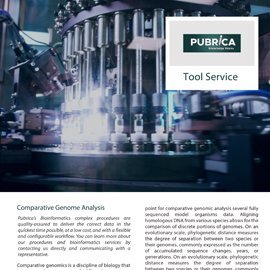Active Site Prediction
Pubrica’s Bioinformatics complex procedures are quality-assured to deliver the correct data in the quickest time possible, at a low cost, and with a flexible and configurable workflow. You can learn more about our procedures and bioinformatics services by contacting us directly and communicating with a representative.
In bioinformatics, accurate active site prediction is a crucial technique. We offer a new structure-based method for exposing active sites based on substantial changes in solvent accessibility that occur during normal mode dynamics. It is also challenged in a benchmark protein-ligand dataset (PLD), which includes many proteins with and without ligands linked to them. It has been exposed that this technique is more accurate than other structure-based strategies. Its excellent precision provides the basis for structure-based active site prediction in proteins and enzymes. The active site tool was used to compute the solvent accessible surface (SAS) area of amino acids in the generated PDB files. SAS was determined for each residue in the two structures at opposite ends of the harmonic motion for each mode, and | Δ SAS| was used to represent the absolute change in SAS between the extreme mode distortions. The active site was running locally with default parameters to calculate pockets. The enormous pockets were estimated in each example, and the pocket centre and pocket-size were measured.
.The geometrical centre (centroid) of the Cα coordinates of all residues with a solvent exposure |SAS| in the range 20-40 Å2 was used to determine the active site. The geometrical centre (centroid) of the Cα coordinates of the active site residues described in the CSA database was used to determine the observed active site. In Cartesian space, each of the anticipated and observed active sites was represented by a single coordinate. The distance between the expected and observed sites was determined as the distance between these two coordinates. The distance between the predicted and observed sites in the training and test datasets was used to assess a predictions accuracy. A prediction was considered successful if the distance between the predicted and observed sites was less than 12 Å2. If the space was greater than 12 Å2, though, the prediction was deemed erroneous. A prediction was considered successful in the particular instance of the PLD dataset and for straightforward comparison with other techniques if any atom coordinate of the ligand was within 4 Å2 of the predicted site. If no ligand atom coordinate was within 4 Å2 of the expected site, the prediction was determined incorrectly.
Our comprehensive Bioinformatics Database services
Types of Bioinformatics: We undertake different types of active site predictions for identified protein subfamily, hydrogen bonds, van der Waals interactions, hydrophobic interactions and electrostatic force interactions.
Wide range of Sources: NCBI, BLAST, Pubmed, Pubmed Nucleotide, Pubmed Protein, Pubmed Gene, Pubmed Sequence.
Let experts support you’re Bioinformatics Research.
We’ll scale
up as your needs grow.
No compromising on integrity and quality. Our processes are well defined and flexible to ramp up as per your requirements.
Partnering with
you till the project end.
We come with you all the way. From design to market support

Pubrica Offerings
Pubrica provides comprehensive bioinformatics research work publishing assistance for various publications, journals, and books. With our writing services, you can now turn your ideas into Project writing, Proposal writing, Research Writing, Thesis writing and Manuscript writing. Science, Technology, Engineering, and Mathematics (STEM) experts with a therapeutic background. It is now simple to publish a research work or obtain regulatory drug approval. With Pubrica's help, you can save time and money.
Frequently asked questions
We are with you the whole nine yards. In this section, we answer the tough questions. For any information, contact us via +91-9884350006 meanwhile, here are some of those queries
Bioinformatics tools extract useful information from many molecular biology and biological databases and perform sequence and structural analysis. Bioinformatics tools aid in the comparison, research, and interpretation of genetic and genomic data.
To predict the 2D structure of a protein molecule, a variety of tools are available. E.g. ExPASy (the Expert Protein Analysis System), developed by the Swiss Institute of Bioinformatics, is one of the essential tools (SIB).
Pubrica will provide a particular time; it depends upon your research work. We're here to help you understand the work you've done and respond to any questions you could have. You can contact us at any time, even after your service has ended.
Homology-based approaches predict a gene by aligning a protein (or RNA sequence in the form of full-length mRNA, cDNA, or EST) with the genome sequence to be annotated. The prediction is influenced by the known sequence (also known as evidence).
Proteomics data analysis, Comparative genomics, Functional genomics, Phylogeny in the protein evolutionary process, and Protein modeling are all examples of bioinformatics being used to predict the function of actual gene products.


